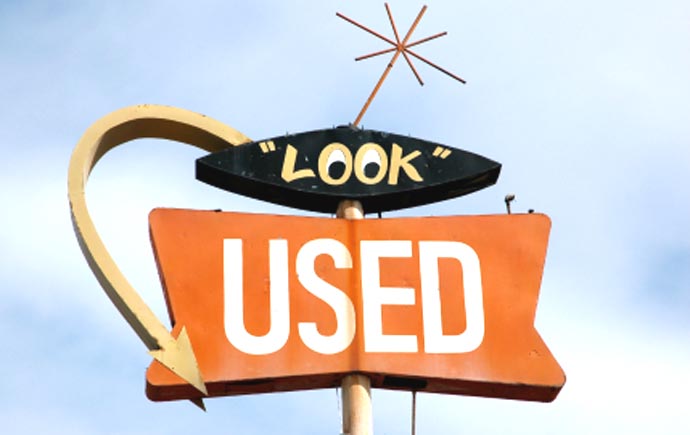Drivers who value the environmental and financial advantages of buying second hand cars will pleased to hear that prices look set to drop.
CAP, publisher of the Black Book price guide used by the used car trade, warns of a “shadow hanging over the market”, but what might be bad for dealers is good for the buying public.

Prices during the first three months of 2013 were stable and at odds with the wider economy, prompting analysts to warn of “gradual erosion of values at most years and for most models”.
Tips for buying secondhand cars
Going for a second-hand car can be a green as well as financially-canny alternative buying new. Cars lose up to half their value after three years, but at that age should still look and drive like new and remain reliable. New cars tend to be more reliable than second-hand cars, but through their assembly, delivery and even marketing, have consumed a significant amount of resources before you drive off the dealer’s forecourt. Breakdown cover for secondhand cars costs from less than £30.
Buy infrequently as the second-hand car market is imperfect. It’s best to choose a car where you know its history. It can make economic sense to spend more repairing a vehicle than its market value. Reliability is the key. Once a vehicle becomes unreliable sell it. You can protect yourself against unexpected repair bills by buying a car warranty. The ETA offers breakdown cover with the option of auto repair – a warranty that pays up to £500 towards the cost of parts and labour following a breakdown attended by them.
Size is important. Buy as small as you can for your day-to-day needs. You may decide you need a big car because you have relatives that live over 400 miles away. If you only visit them twice a year, however, and most of your driving is done in a 50-mile radius a big car may be inefficient. By buying a smaller car for the majority of driving, and renting a bigger car for the long trips, you will save money.
Consider sharing a car. Many people now have an informal arrangement with friends or neighbours, car clubs offer a slick, money-saving and green alternative to private car ownership. If you drive less than 6,000 miles per year it is claimed a car club could save you up to £3,500 a year. Many people don’t notice the true costs of running a car, but when you add up the cost of tax, MOT, fuel, servicing, repairs, depreciation and parking you could be looking at over a hundred pounds a week.
Buy a fuel-efficient car. The fuel economy of similar-sized cars using the same type of fuel can vary wildly.
Lucy MacArthur
I am glad to see that the ETA are recognising that older cars can be as if not more than environmentally friendly than newer cars. I have never insured with the ETA (I do have breakdown cover) because the premiums were unaffordable for us for our old diesel peugot. Aside from the insurance issue, it seems to me that how a person drives and how much unessential mileage they do are the big issues. We are a one car household and I do as much commuting as I can by public transport and cycling. We both avoid using the car for leisure as far as possible. We mostly drive slowly (and seem to drive others to distraction even when just keeping within speed limits in villages and towns!) and we accelerate SLOWLY and don’t try to rush up hills with our feet flat to the floor.
Although I can understand why people do, I believe that buying new cars is supporting a destructive industry (even where the car’s design cuts the carbon output, as mentioned in the article the input is often huge) and an extremely strong lobby in favour of unsustainable transport. So, even if I could afford to buy new, I would stick to used cars.